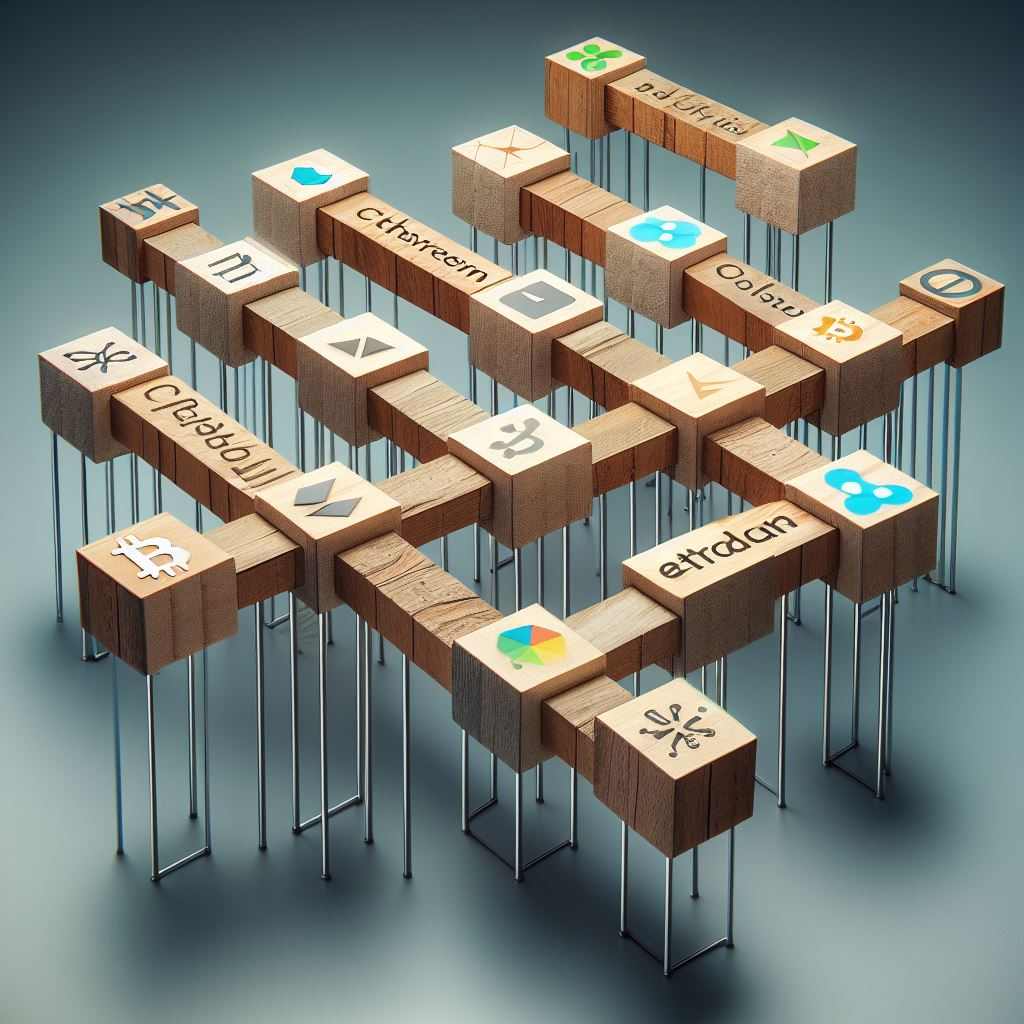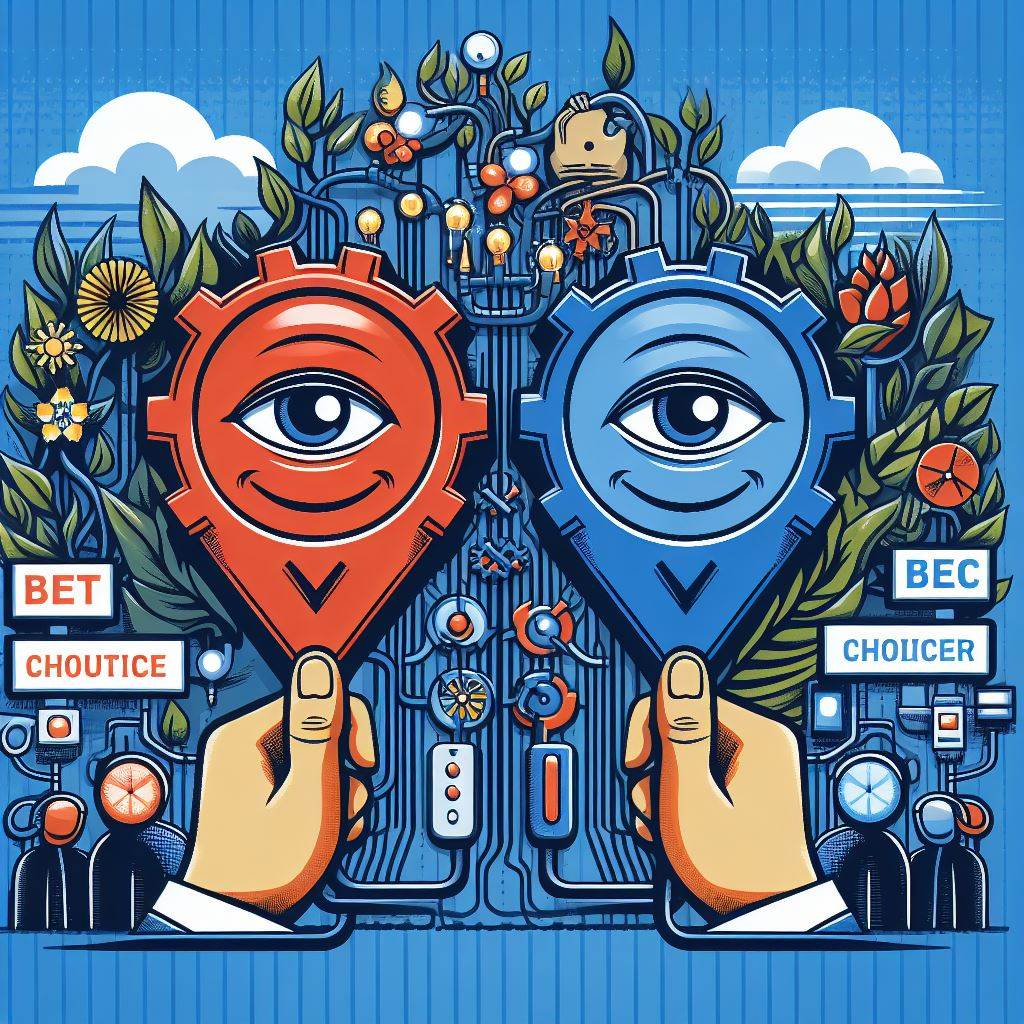Blockchain Interoperability: Connecting Different Blockchains

In the ever-evolving landscape of blockchain technology, interoperability has emerged as a pivotal concept, transforming the way we perceive and utilize decentralized systems. While individual blockchains offer unique advantages, their isolation hinders the seamless exchange of data and assets. This article delves into the intricacies of blockchain interoperability, exploring the challenges, solutions, and the transformative potential it holds for the broader blockchain ecosystem.
Understanding Interoperability in Blockchain

Understanding Interoperability in Blockchain
Blockchain, often lauded for its decentralized nature, encounters a significant hurdle—isolation. Each blockchain operates within its closed environment, impeding communication and collaboration with other networks. The key to overcoming this lies in achieving interoperability, a technical feat that enables different blockchains to communicate, share data, and execute transactions seamlessly.
The Role of Standards in Interoperability
Establishing interoperability requires adherence to common standards. These standards serve as the language that allows disparate blockchains to understand and interact with each other. Akin to a universal translator, standards such as Interledger Protocol (ILP) and Atomic Swaps enable smooth communication, fostering a connected blockchain ecosystem.
Challenges in Achieving Blockchain Interoperability
As with any groundbreaking technological advancement, blockchain interoperability encounters its share of challenges. Scalability, consensus mechanisms, and security concerns loom large as obstacles to the seamless integration of disparate blockchains.
Scalability Woes: A Bottleneck in Interconnected Blockchains
Scalability issues pose a significant challenge in achieving widespread blockchain interoperability. As more blockchains join the network, the strain on resources intensifies, leading to potential bottlenecks. Tackling this requires innovative solutions like sharding and layer-two scaling solutions, ensuring efficient communication between interconnected networks.
Consensus Mechanisms: Unifying the Unruly
Divergent consensus mechanisms among blockchains add another layer of complexity to achieving interoperability. Whether it’s Proof-of-Work (PoW), Proof-of-Stake (PoS), or Delegated Proof-of-Stake (DPoS), finding a common ground becomes imperative. Exploring hybrid consensus models and cross-chain consensus protocols becomes crucial in fostering a harmonious blockchain network.
Solutions: Building Bridges Between Blockchains

Solutions: Building Bridges Between Blockchains
Overcoming the challenges of interoperability demands creative solutions. Cross-chain bridges, sidechains, and middleware protocols emerge as the architects of connectivity, seamlessly linking disparate blockchains and facilitating the flow of data and assets.
Cross-Chain Bridges: Spanning the Blockchain Chasm
Cross-chain bridges act as virtual connectors, allowing assets and data to traverse between different blockchains. This entails the creation of wrapped tokens that represent assets from one blockchain on another, establishing a dynamic bridge that transcends the boundaries of individual networks.
Middleware Protocols: Enabling Seamless Communication
Middleware protocols, such as Polkadot and Cosmos, act as intermediaries facilitating communication between blockchains. These protocols provide a framework for cross-chain transactions, ensuring compatibility and cohesiveness in a heterogeneous blockchain environment.
Real-world Implications: Industries Transformed by Blockchain Interoperability

Real-world Implications: Industries Transformed by Blockchain Interoperability
The impact of achieving blockchain interoperability extends far beyond the realm of cryptocurrency. Industries such as finance, supply chain, and healthcare stand to gain immensely from interconnected blockchains, fostering efficiency, transparency, and trust.
Revolutionizing Finance: Decentralized Finance (DeFi) Unleashed
The financial sector undergoes a paradigm shift with the advent of blockchain interoperability. Decentralized Finance (DeFi) emerges as a formidable force, with interconnected blockchains enabling seamless lending, borrowing, and trading of assets without the need for traditional intermediaries.
Supply Chain Traceability: A Transparent Future
Blockchain interoperability brings a new era of transparency to the supply chain. From source to shelf, interconnected blockchains enable real-time traceability, mitigating fraud, reducing inefficiencies, and enhancing the overall integrity of supply chain processes.
The Future Landscape: Navigating Towards Blockchain Interoperability
As we navigate the complex terrain of blockchain interoperability, the future holds promises of a more connected and efficient decentralized ecosystem. Innovations such as Cross-Chain Smart Contracts and Blockchain Bridges 2.0 herald a new era where the barriers between blockchains dissolve, creating a unified network with limitless possibilities.
Conclusion
In conclusion, blockchain interoperability stands as a cornerstone for the future of decentralized technologies. Overcoming challenges through standardized protocols and innovative solutions unlocks the true potential of blockchain networks. The transformative impact extends across industries, ushering in a new era of efficiency, transparency, and collaboration.
FAQs
1. Why is blockchain interoperability important?
Blockchain interoperability is crucial as it allows different blockchains to communicate and share data seamlessly. This interconnectedness fosters collaboration, enabling the realization of the full potential of decentralized technologies.
2. How do cross-chain bridges work?
Cross-chain bridges act as virtual connectors, creating a pathway for assets and data to move between different blockchains. This is often achieved through the creation of wrapped tokens that represent assets from one blockchain on another.
3. What are the challenges of achieving blockchain interoperability?
Challenges include scalability issues, divergent consensus mechanisms, and security concerns. Overcoming these hurdles requires innovative solutions such as sharding, cross-chain consensus protocols, and middleware protocols.
4. How does blockchain interoperability impact the financial sector?
Blockchain interoperability revolutionizes the financial sector by giving rise to Decentralized Finance (DeFi). Interconnected blockchains enable seamless lending, borrowing, and trading of assets without traditional intermediaries.
5. What industries benefit from blockchain interoperability?
Industries such as finance, supply chain, healthcare, and energy stand to benefit from blockchain interoperability. It enhances transparency, traceability, and efficiency in various processes across different sectors.
6. Are there risks associated with cross-chain transactions?
Yes, cross-chain transactions come with their set of risks, including smart contract vulnerabilities and potential security breaches. It is crucial to implement robust security measures and conduct thorough audits to mitigate these risks.
7. How do middleware protocols ensure interoperability?
Middleware protocols act as intermediaries, ensuring seamless communication between blockchains with different architectures. They facilitate data and asset transfers by translating information between disparate systems, promoting a standardized approach to interoperability.
8. Can blockchain interoperability be achieved without compromising security?
Yes, achieving blockchain interoperability without compromising security is possible through the implementation of advanced cryptographic techniques, multi-signature schemes, and secure communication channels. The emphasis on security measures is integral to the success of interconnected blockchain networks.
9. Are there regulatory challenges associated with blockchain interoperability?
Yes, regulatory challenges exist, as the interconnected nature of blockchains raises questions about jurisdiction and compliance. Harmonizing regulatory frameworks across different regions becomes essential to ensure a smooth and legally compliant operation of interconnected blockchains.
10. How can individuals contribute to the development of blockchain interoperability?
Individuals can contribute by participating in open-source projects focused on interoperability, staying informed about the latest advancements, and advocating for standardized approaches. Collaboration within the blockchain community plays a crucial role in driving the development and adoption of interoperable solutions.

Content List
editor's pick
news via inbox
Nulla turp dis cursus. Integer liberos euismod pretium faucibua






